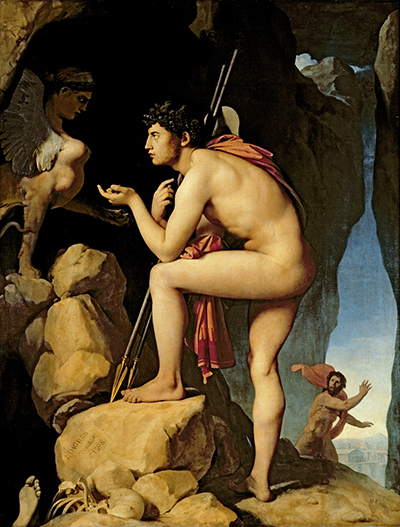Oedipus and the Sphinx was painted by Jean Auguste Dominique Ingres in 1808, at which point he would have been around 28. It is one of many Ingres paintings to now be found at the Louvre.
The scene captures Oedipus explaining the riddle of the Sphinx and was originally completed by a student of Ingres before he later chose to develop the piece into his own. Collaboration within art studios is nothing new and has been around for many centuries, sometimes making accurate attributions harder to achieve where so much crossover exists. Typically, a master's studio will only use students whose styles are fairly similar to their teacher's. This ensured continuity, but also further added to the problems in identifying different artist's work - hence the common phrase of "studio of" which applies to many lesser known paintings from past centuries.
Ingres was awarded the Grand Prix de Rome in 1801 and this enabled him to study in Rome, as part of the prize. He worked on Oedipus and the Sphinx over an extended period and sent documentation of his working practises and progress back to France as part of their aggreement. They wished to see whether his time in Italy was proving beneficial to his development as an artist. They returned constructive criticism of some elements of this piece, but he continued regardless. They had a very clear idea on what style was acceptable to their tastes and Ingres did not always agree with these views.
One interesting aspect of the way in which Ingres later redeveloped this painting was in his influence from Nicolas Poussin, as shown by the pose of the figure in the background. The artist also enlarged the canvas to allow further details to be added around the figure as well as changing the overall style of the piece, which originally was purely a simple figurative painting without much real meaning. He also introduced a greater contrast in lighting too, perhaps describing the changes that the artist had made to his style since his earlier work on this piece.




